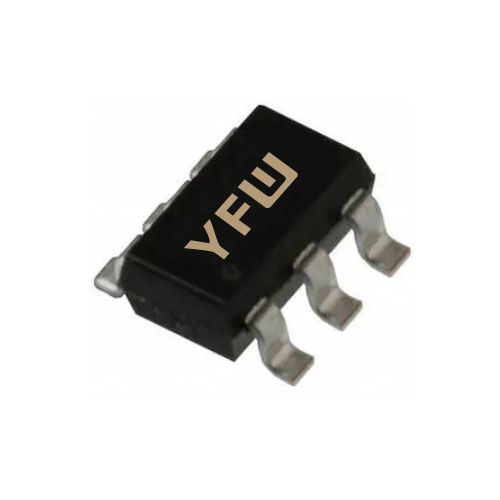A rectifier diode is a two-terminal semiconductor device based on a PN junction, allowing current to flow in one direction only. When forward-biased (positive voltage applied to the anode), the diode conducts current with a voltage drop of approximately 0.7V for silicon-based diodes. Conversely, under reverse bias, the diode blocks current until the reverse voltage exceeds its breakdown threshold. This unidirectional behavior forms the basis of rectification, where AC input is converted into pulsating DC output.
YFW’s rectifier diodes, such as the 1N4002G (DO-41 ) and MBR40200PTS (TO-247S ), are engineered with precision to ensure consistent performance across diverse applications. These diodes undergo rigorous testing to meet international standards like ROHS and IATF 16949, reflecting YFW’s commitment to quality and reliability.
Reverse Voltage (URRM): The maximum reverse voltage a diode can withstand without breakdown. YFW’s 1N4002G, for example, offers a URRM of 100V, while the MBR40200PTS supports up to 200V.
Average Forward Current (IF(AV)): The maximum continuous current the diode can handle. YFW’s 1N4002G is rated for 1A, suitable for low-power applications, whereas the MBR40200PTS delivers 20A for high-power systems.
Surge Current (IFSM): The transient current the diode can endure during start-up or fault conditions. YFW’s diodes, like the UF207, feature an IFSM of 50A, ensuring robustness in dynamic environments.
VF is the voltage across the diode when conducting forward current. Lower VF values reduce power dissipation and improve efficiency. YFW’s MBR40200PTS achieves a VF of 0.73V, making it ideal for energy-sensitive applications.
TRR measures the time required for the diode to switch from conduction to blocking mode. Fast recovery diodes, such as YFW’s US1MW (TRR = 75ns), are critical for high-frequency switching in power supplies and inverters.
Rectifier diodes generate heat during operation, necessitating thermal management. YFW’s diodes are designed with low thermal resistance and can operate at temperatures up to 150°C, ensuring stability in harsh environments.
In AC-to-DC converters, rectifier diodes bridge the gap between raw AC input and regulated DC output. YFW’s 1N4007 series, with URRM up to 1000V, is widely used in household appliances and industrial power modules.
Diodes prevent reverse current flow, protecting batteries from damage. YFW’s fast recovery diodes, like the FR107, ensure efficient charging in electric vehicles and portable electronics.
High-voltage diodes (e.g., YFW’s STTH8R06) are essential for motor drives and inverters, where they handle high currents and voltage spikes.
Compact diodes in SMD packages (e.g., YFW’s SOD-323FL series) enable miniaturization in smartphones, laptops, and IoT devices.
Choosing a rectifier diode involves balancing parameters with application requirements:
Voltage and Current Requirements: Ensure URRM and IF(AV) exceed the circuit’s peak values by 1.5–2 times.
Switching Speed: Fast recovery diodes (TRR < 500ns) are vital for high-frequency applications, while standard diodes suffice for low-frequency tasks.
Thermal Design: Use heat sinks or thermal pads for high-power applications to prevent overheating.
Environmental Factors: Consider temperature ranges, humidity, and mechanical stress when selecting 封装形式 (e.g., DO-41, TO-220).
YFW’s comprehensive product portfolio, including the 1N4002G, MBR40200PTS, and US1MW, offers tailored solutions for diverse needs. For instance, the 1N4002G’s low-profile DO-41 suits automated PCB layouts, while the MBR40200PTS’s TO-247S provides robust thermal dissipation.
YFW differentiates itself through:
Advanced Manufacturing: State-of-the-art facilities in Changzhou, China, ensure precision engineering and strict quality control.
Customization: YFW collaborates with clients to develop diodes for niche applications, such as automotive electronics and medical devices.
Reliability: Products undergo rigorous testing to meet international standards, including CE, ISO, and IATF 16949.
Innovation: Continuous R&D drives the development of next-gen diodes, such as silicon carbide (SiC) devices for high-efficiency power systems.
General rectifier diodes are indispensable in modern electronics, and YFW’s innovative solutions set the benchmark for performance and reliability. By understanding their characteristics—voltage/current ratings, switching speed, and thermal behavior—designers can optimize circuit efficiency and longevity. With a focus on quality, customization, and cutting-edge technology, YFW empowers industries worldwide with semiconductor components that drive progress.
